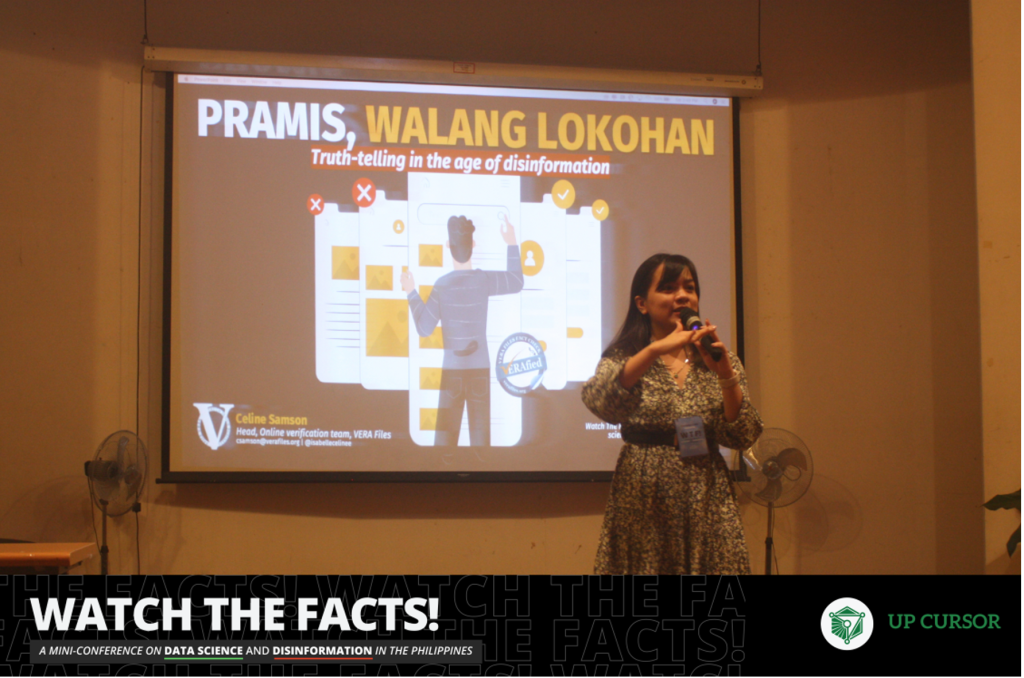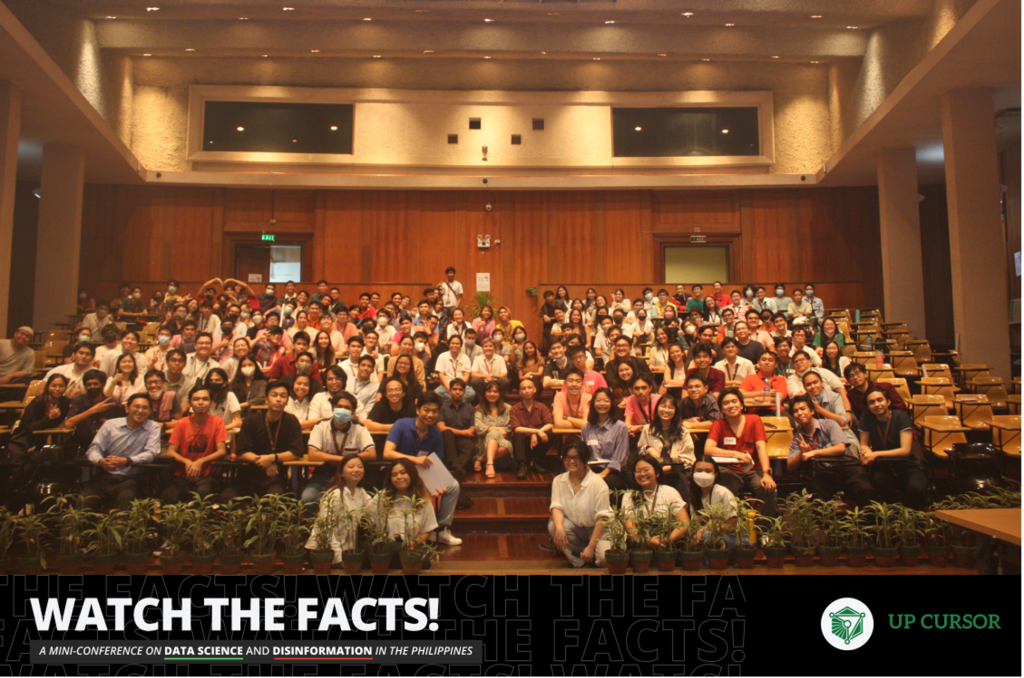Kristine Bernadette Q. Nuñez | BS Computer Science | CS 132 (Introduction to Computer Science)
Posted on May 9, 2024
What do Leni Robredo, the Marcoses, Chad Booc, and COVID-19 have in common? Not much, except for the disinformation that surround them in social media.
Disinformation, misinformation, however it may be called, perpetuates twisted facts held as truth by those gullible enough to believe in them. Fake news, as we commonly call. The resulting dysfunction it creates in our society makes for a grave concern. Fighting disinformation has thus become the battle cry of Watch the Facts!, a mini-conference about disinformation on Twitter held on June 24, 2023 in Melchor Hall.

Wide-eyed wonder. For most of us, Watch the Facts! was a first – first time to collaborate with professionals outside of our field of expertise, first time to present our results in public – and we welcomed it with excitement and enthusiasm. The mini-conference consisted of poster presentation sessions and talks related to disinformation. It was the culmination of an entire semester of work for CS 132 (Introduction to Data Science) which required us to identify a widely propagated fake news, formulate a Data Science problem related to it, collect, and analyze its Twitter data using statistical and machine learning techniques. By crunching Twitter data, we found that indeed, fake news is being intentionally fed to our social media accounts, and that it is driving public opinion. Although the findings are just a validation of what we already know, the question is how it can be effectively communicated to the common person. Because only then our data can be useful.

Walking through the posters and listening to some of my classmates’ presentations, I was in awe at how creatively technical data was presented, making it easily digestible. At the same time, it made me worry whether our group had prepared enough. I still feel how nerve-wracking it was to explain our results, as the poster set us up to a small audience, making each question feel more personal. The experience, however, taught me that we need to translate our data into a form which grabs attention and is understandable to non-engineers. We cannot stay in our silos speaking of change-points detected by the Pelt algorithm, or significant difference indicated by the Fisher z test values, lest most people fail to appreciate our message and turn to fake news instead.
The event was an academic success. We were able to practically apply our learnings from our Data Science class. The talk that ensued the poster session highlighted how journalists use technology to ensure news accuracy. Perhaps more valuable than the awards handed out for the best posters was the resulting reminder that although technology, social media in particular, can be harmful, we have the power to use technology as a tool to validate information. Facing the real-world problem of fake news was an eye-opener. It made me realize that Deepfake or ChatGPT are not the big challenges ahead. Rather, the real challenge is how to utilize my skills to fight disinformation.

Eyes wide shut. Because of technology, what we once had as tsismis has transformed into fake news. Whereas tsismis made neighbors take sides, fake news polarizes the public. While tsismis broke relations, fake news now causes divisiveness among us. Whatever its form may be, we cannot let disinformation mislead us, or continue misleading many.
Should we keep looking away, woe the time when Leni Robredo, the Marcoses, Chad Booc, and COVID-19 become one and the same in our eyes. Facts and lies, all alike. Let us watch the facts.

Kristine Bernadette Q. Nuñez is a graduate of Bachelor of Science in Computer Science at University of the Philippines Diliman. Part-time data scientist, full-time cat.
